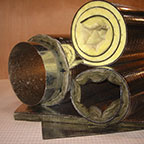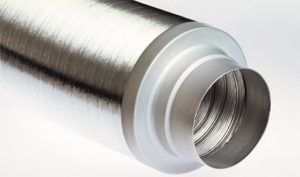 Planning Quieter Equipment Rooms
Planning Quieter Equipment Rooms
Mechanical rooms for elevator, HVAC, pumps, and other equipment are found in most residential, mixed use, and commercial buildings. Noise from these rooms can be transmitted via airborne paths to nearby spaces, or along structural paths to spaces that may be farther away. Soundown’s solutions include insulation treatments to contain the airborne space and isolation materials to reduce structureborne noise.
In some cases, determining how noise is escaping and which treatment to use can be a complex engineering task. However, some basic guidance, a critical ear, and some common sense will often do the trick. Airborne noise levels will be reduced by partitions and distance. If noise levels are highest in directly adjacent spaces and decrease in the next space, the noise is likely airborne. Where the noise level is not greatly reduced in the next space, it is likely to be structureborne. Please note that noise typically has some component traveling along each path. This guidance should help you identify the primary path and plan your treatments.
The first step in containing airborne noise is to make sure that the equipment room is well sealed. This includes using solid core doors that are well sealed to the jamb and threshold. Duct work is somewhat harder to treat, as air flow is typically required. Proper duct routing and the inclusion of a Soundown Flexible Duct Silencer  will greatly reduce the noise that is transmitted though the ducting. When planning the ducting runs, try to run them along walls that are not common to residences or offices. Including a number of 90-degree bends in the duct also will help reduce airborne transmission.
will greatly reduce the noise that is transmitted though the ducting. When planning the ducting runs, try to run them along walls that are not common to residences or offices. Including a number of 90-degree bends in the duct also will help reduce airborne transmission.
In some cases, duct work that carries noise must travel through or above occupied areas. This should be easily distinguished – complaints will come mainly from the space those ducts run through. In this case, Soundown QuietLag pipe and duct wrap should be wrapped around the duct work. QuietLag consists of a quilted fiberglass insulation layer, TuffMass acoustic barrier, and ripstop facing. This treatment is highly effective at stopping breakthrough noise that is transmitted out of the duct.
If noise complaints are coming from residents or tenants in adjacent spaces, the noise is likely to come directly through walls, floors, or ceilings that lack sufficient sound-blocking ability. In these cases, the walls can be insulated using Soundown TuffMass-UL or QuietLag products. Because the barrier in QuietLag is decoupled by the fiberglass layer, it can be installed directly to the wall surface. If TuffMass is used, it should be spaced from the wall using furring strips, and the cavity created behind it should be filled acoustic fiberglass or mineral wool.
Structureborne noise is a result of energy that is transmitted to the structure of the building from equipment and then radiated off of floors and walls. While structureborne noise will reduce over distance, it will not be significantly affected by partitions such as walls or floors. If noise complaints and levels are only slightly reduced as you move away from the equipment room, the path is most likely structureborne.
The straightforward solution for structureborne noise is to place the piece(s) of equipment on vibration isolators. Soundown has a range of resilient mounting options, including rubber mounts, spring mounts, and elastomeric pads. The best mounting option will be sized based on the weight and excitation frequency of the equipment and installed with minimal need for X piping, ducting, or other rework.
To assist Soundown’s staff in recommending the best mounting option, please supply spec sheets for the equipment as well as a drawing or photos of the installation, if available.